|
28th May
Tyninghame Bay
I headed for Musselburgh seeking the reported Wood
Sandpiper and maybe the Spoonbill but I was annoyed to find my way was
obstructed by the surging masses
of people involved in the Edinburgh Marathon. So a change of
destination was
quickly decided. We headed instead for Tyninghame Bay. My companion for
the
trip was my lovely wife, Jenny as John had family commitments.
On leaving the carpark my attention was drawn to a
singing Reed Bunting
sitting atop a bush. On the salt marsh I photographed a Meadow Pipit
and a
distant Ringed Plover. As we approached the beach we were met with a
chirping
Skylark. It was the first of many Skylarks we were to see.
Reed Bunting
|
Meadow Pipit
|
Ringed Plover
|
Skylark
|
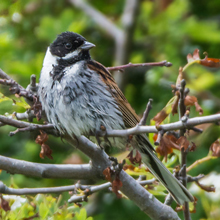
|
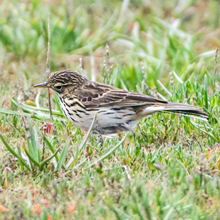
|
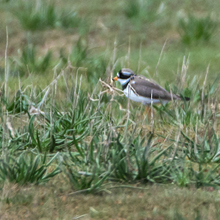
|
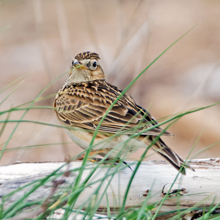
|
As we crossed the grass-covered sand dunes we came upon
several plants
living in the very sandy environment. Little pink flowers of Common
Storksbill,
the bright yellow Bird’s Foot Trefoil flowers and lilac flowers of Sea
Rocket
were fairly abundant. Every now and again we would disturb a Small
Heath
butterfly that would dart elusively through the grassy dunes.
Common Storksbill
|
Common Bird's -Foot Trefoil
|
Sea Rocket
|
Small Heath
|
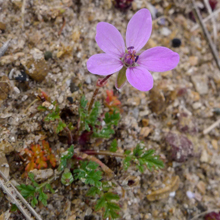
|
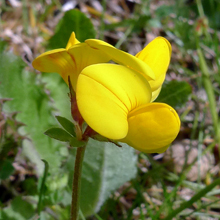
|
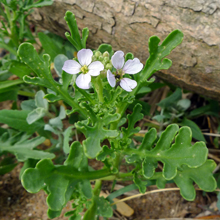
|
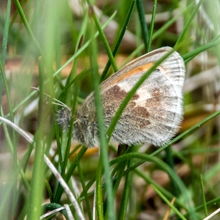
|
We passed through an open area within the grassy dunes
where there seemed to
be very many Skylarks calling and occasionally rising singing into the
air. As
we finished our short circuit of the salt marsh we found yet more
wildflowers –
Thrift, Vipers Bugloss and White Deadnettle.
| Skylark |
Thrift
|
Vipers Bugloss
|
White Dead Nettle
|
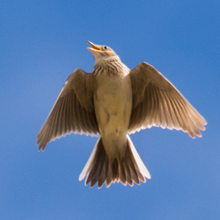
|
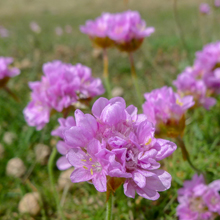
|
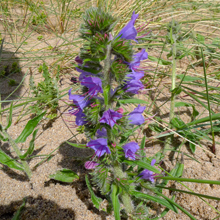
|
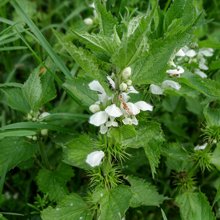
|
Then it was back to the car for a cup of tea and a
chocolate biscuit. Not a
bad haul of shots considering we had lost so much time getting out of
Musselburgh.
My shots of the day were of a rising Skylark and a patch
of Thrift.
Skylark
|
Thrift
|
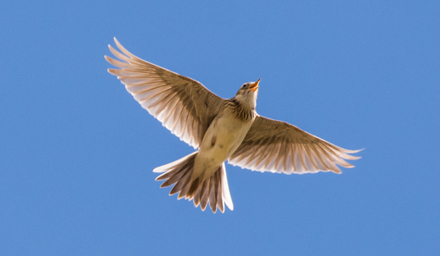
|
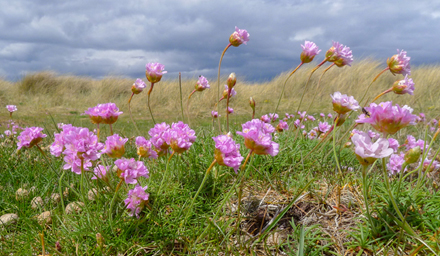
|
21st May 2017
Belhaven Bay, Dunbar Harbour
After the lack of birds last week we were hoping for an
improvement at
Belhaven Bay and Dunbar Harbour. Our customary breakfasts at Morrisons
in Dalkeith
were 8/10 due to overcooked yolks and sloppy bacon. Undeterred by this
early
setback we headed east also hoping for an improvement in the light as
the sun
was yet to show from behind a 100% coverage of grey cloud.
At the Belhaven Bay carpark we were greeted by small
flock of House Sparrows
chirping merrily as they chased insects. We walked along the path to
Seafield
Pond and spotted an oddly marked Carrion Crow. We wonder if this was an
old
bird or if it was leucitic. By the sea wall we found a yellow
wildflower I’ve
yet to identify – I think it is a member of the Cress family. Beside
it, White
Deadnettle plants were now starting to flower.
House Sparrow
|
Carrion Crow
|
T.B.C
|
White Dead Nettle
|
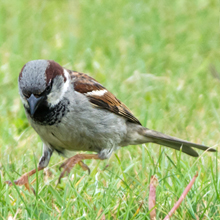
|
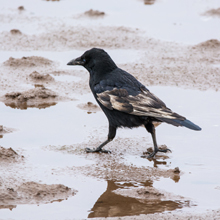
|
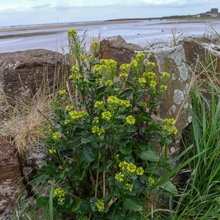
|
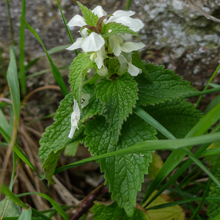
|
Another plant by the wall was Hoary Cress. It was just
coming into flower
and I think if I returned in a few weeks it would be much bigger and
dominating
the verge. As we cautiously made our way down to the Pond, a Grey Heron
flew
over and landed at the opposite end and immediately started to catch
small
fish. Mallards resting on an artificial island stirred as we
approached. A
female Mallard flew by, chased by another female.
Hoary Cress
|
Grey Heron
|
Drake Mallard
|
Female Mallard
|
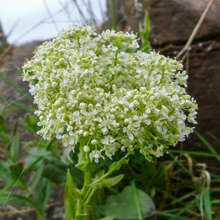
|
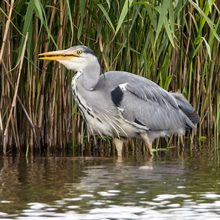
|
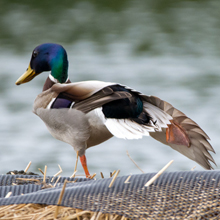
|
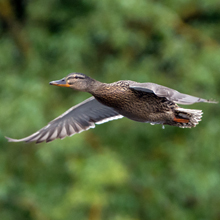
|
Unstirred was a Mute Swan gliding serenely into view
past a pair of Tufted
Ducks and a statue of a man with a fish on his head. Occasionally a
screaming
pair of Coots would engage in battle usually resulting in one
frantically
scampering away, living to fight another day.
Mute Swan
|
Tufted Duck
|
|
Coot
|
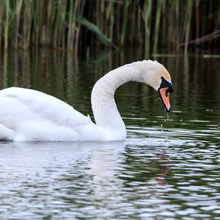
|
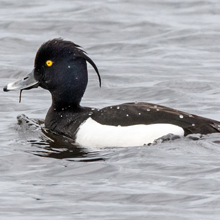
|
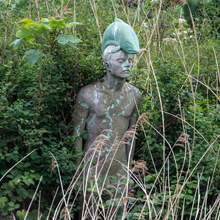
|
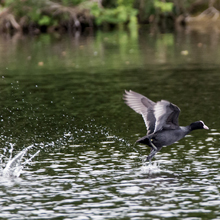
|
By the Pond I found Cuckoo Flowers and Common Mouse-ear.
John found what we
thought was a butterfly or moth pupae. I later discovered it was
actually a
fungus, Nettle Rust. Nearby a fledgling Starling investigated a leaf
before
seeking out its mother for an easier feed.
Cuckoo Flower
|
Common Mouse-ear
|
Nettle Rust
|
Juvenile Starling
|
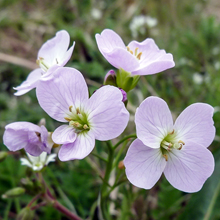
|
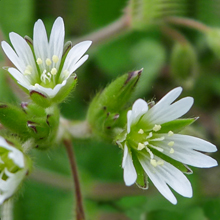
|
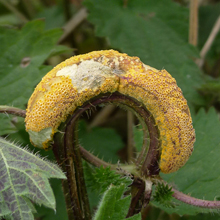
|
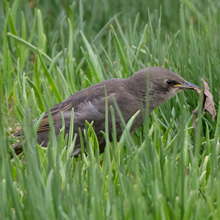
|
As we left the Pond we paused to catch a glimpse through
dense reeds of a
singing Sedge Warbler. In the trees a Chaffinch was keeping an eye on
us. A
Robin made off as we passed but on a treetop a lazy looking Jackdaw
couldn't
have cared less.
Sedge Warbler
|
Chaffinch
|
Robin
|
Jackdaw
|
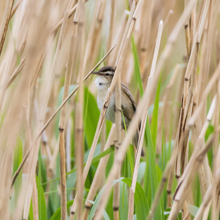
|
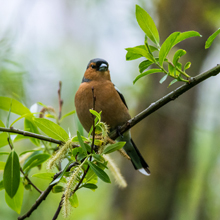
|
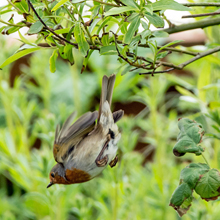
|
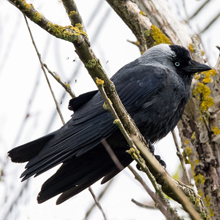
|
On the seawall a female House Sparrow had a mouthful of
Damselfly presumably
for its nestlings. We startled another Grey Heron as it fed in a ditch
adjacent
to the path. It moved just a few metres further away and didn't look
too
pleased as it waited for us to go away. Just as we reached the carpark
a pair
of Woodpigeons were foraging in the salt marsh.
At this point we drove up to Dunbar Harbour to look for
Kittiwakes and
Fulmars. When we got there many Kittiwakes were nesting on the castle
wall.
Female House Sparrow
|
Grey Heron |
Wood Pigeon
|
Kittiwake
|
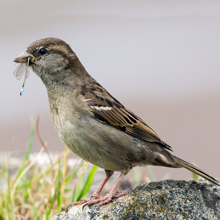
|
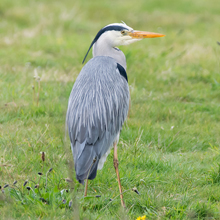
|
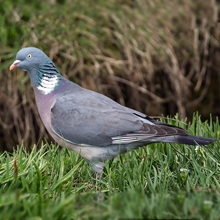
|
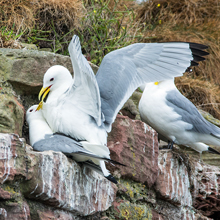
|
As we stood by the clifftop, the sky was filled with
many birds. I warmed up
my camera for flying shots by snapping a Herring Gull. Offshore a pair
of
Gannets dived dramatically over and over again. Then, after a bit of a
wait,
several Fulmars treated us to a spectacular display of aerial skills
before
heading off again seaward.
Herring Gull
|
Gannet
|
Fulmar
|
Fulmar
|
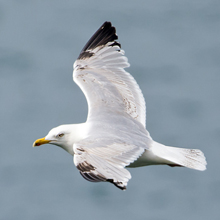
|
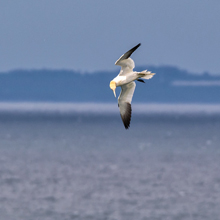
|
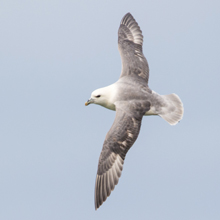
|
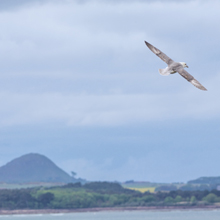
|
We ended our trip believing we had got our mojo back –
lots of birds. Our
reward was tea and a pair of custard tarts, i.e. 2 each! It was too
much - eyes
bigger than our bellies! We travelled back home feeling a bit stuffed.
My
camera was certainly stuffed with photographs.
Shots of the Day were of a House Sparrow and a Fulmar,
both taken at Dunbar
Harbour.
House Sparrow
|
Fulmar
|
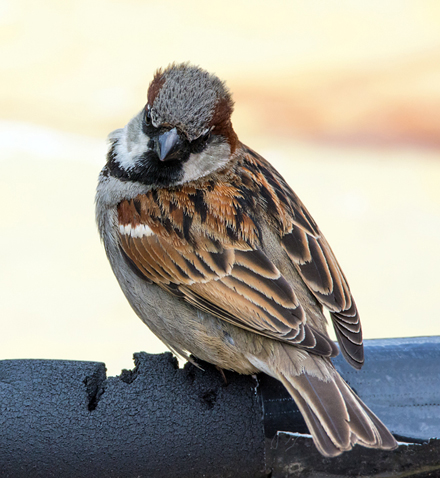
|
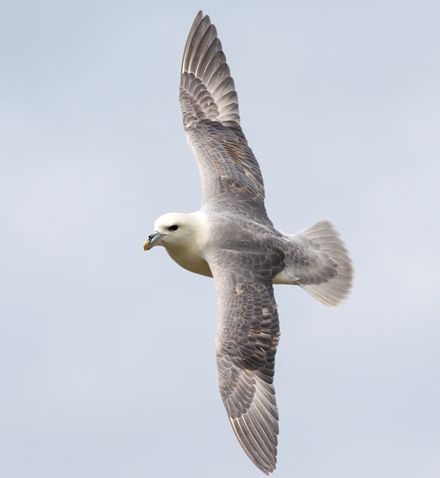
|
14th May 2017
Barns Ness and Torness
After reports of possible migrants in the Lothians we
set off for East
Lothian, specifically Barns Ness, in the hope of seeing some of these
little
travellers. As it turned out we saw fewer birds than normal but we were
lucky
to find other delights that certainly made up for our initial
disappointment at
the lack of birds.
We got off to a great start in Dalkeith Morrisons cafe where we had a
very
satisfying breakfast.
On arriving at Barns Ness the tide was very low, taking the seashore,
and
the birds, many metres out. We noticed though that there were many
flowers and
insects that we could investigate.
Starting at the lighthouse we found patches of Bird’s-foot Trefoil
being
probed by Common Carder bees. Also there were also patches of Common
Scurvy-grass and Wallflower.
Common Bird's- Foot Trefoil
|
Common Carder Bee
|
Common Scurvy Grass
|
Wallflower
|
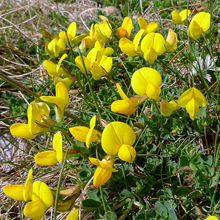
|
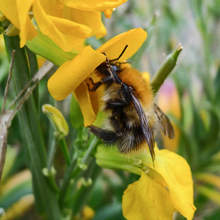
|
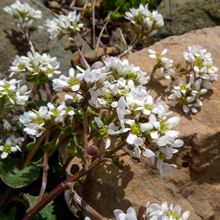
|
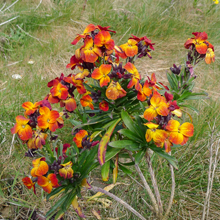
|
By the wall of the lighthouse we found
beautiful clumps of Greater Stitchwort. One flower had the dagger fly,
rhamphomyia crassirostris, thrusting its needle-like mouthparts deep into the
centre of the flower. Also by the wall the white flowers of White Deadnettles
were starting to show.
Greater
|
Stitchwort
|
Rhamphomyia
Crassirostris
|
White Dead-nettle
|
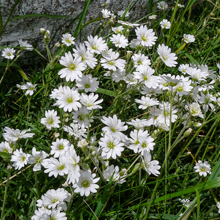
|
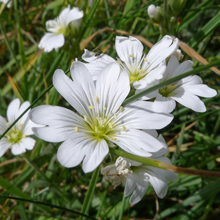
|
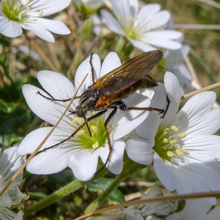
|
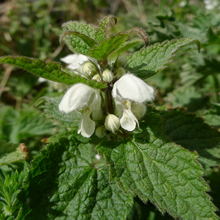
|
As we walked along the coastal path we stalked a Small
Heath butterfly and
in doing so I came across a new flower for me, Spring Vetch, whose
flower is
similar to Common Vetch but a lot smaller. The only bird we saw that
came
anywhere near us at that time was a lone Rook foraging in the rocks. We
decided
to move westwards to a wooded area to see if we could find anything
there. A
wall butterfly was our only find until we arrived at the old disused
caravan
site.
Small Heath
|
Spring Vetch
|
Rook
|
Wall
|
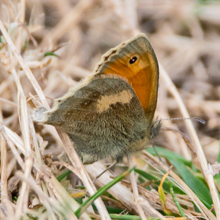
|
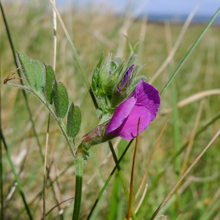
|
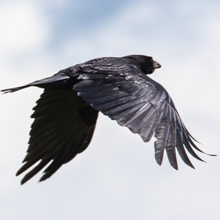
|
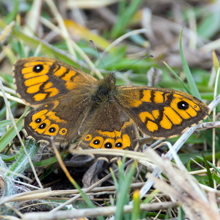
|
A very common flower in early in May is the lovely Red Campion. Whilst
photographing these, a 7-spot Ladybird wandered into my view. Then the
manic
calls of Common Whitethroat drew me to a bush near the carpark while
John
photographed some St Mark’s Flies on grass.
Red Campion
|
7-Spot Ladybird
|
Whitethroat
|
St Mark's Fly
|
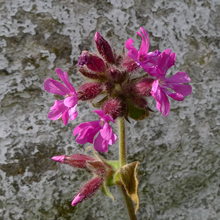
|
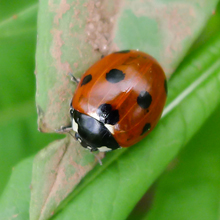
|
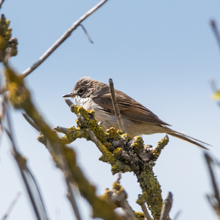
|
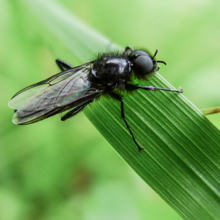
|
I spotted some Narcissus flowers, romantically named,
Poet’s daffodil,
probably a leftover from the caravan site. Beside these were little
Ground Ivy
plants with their dainty purple flowers. In the grass little blue
flowers of
Germander Speedwell flowers were dotted around. We decided to check the
tall
trees bordering the site for migrants but all we found of interest
there were
plants with small spherical flower heads. These were probably
developing heads
of Sheep’s Bit Scabious.
Poet's Daffodill
|
Ground Ivy
|
Germander Speedwell
|
T.B.C
|
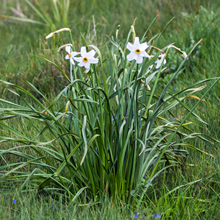
|
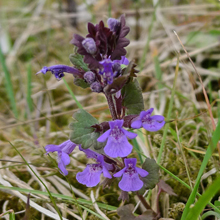
|
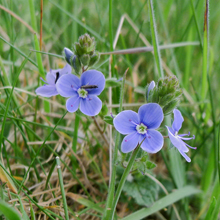
|
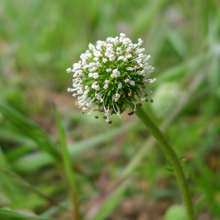
|
Another remnant of the old caravan site we found was the
Greater Periwinckle
with its fairly big purple flowers. As we made our way back to the car
we disturbed
a Cinnabar Moth. After a long chase I managed to get a couple of nice
pictures.
We moved on briefly to Torness to see if we were missing anything there
– we
weren’t – however by the roadside an obliging Swallow posed long enough
for
John to snap it from his side of the car. After that it was time for
Danish
pastry and tea. It had been a bit different from our normal Sunday –
but
enjoyable nevertheless.
Greater Periwinkle
|
Cinnabar
|
Moth
|
Barn Swallow
|
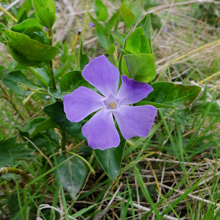
|
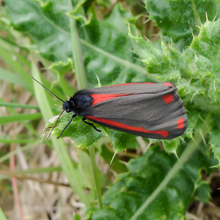
|
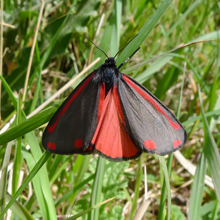
|
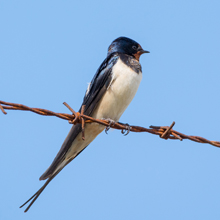
|
7th May 2017
Pow Burn
We were excited at the prospect of
spending a warm, sunny, early summer’s
day walking along Pow Burn near Prestwick, as we could expect to see
some
recently arrived birds. But not before we had dined at Kilmarnock
Asda’s cafeteria
for a bit of breakfast. It was marked down a wee bit this week, to
8.5/10, due
to stodgy beans and over-cooked bacon. Our first sighting was a Peacock
butterfly feasting on
Dandelions. The banks of the Pow Burn were well populated with
vividly-coloured
Bluebells. The first bird we encountered was the Sedge Warbler. Its
crazy song
consists of seemingly random notes and sounds. It was to be the first
of many
encounters. As we sat patiently waiting for the Warbler to show as it
hopped
amidst the dense mass of twigs, a bold Goldfinch breezed in and took
centre
stage, belting out a stream of twittery notes, apparently ignoring our
presence.
| Peacock Butterfly |
Bluebell |
Sedge
Warbler |
Goldfinch |
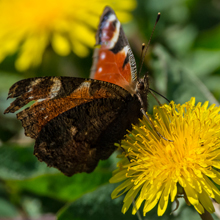 |
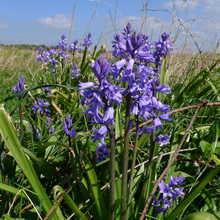 |
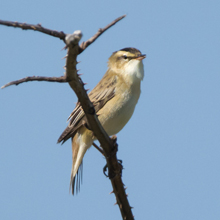 |
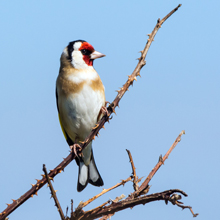 |
Further along the path, as we
stalked another Sedge Warbler, a couple of male Stonechats appeared to
be vying for the attention of a lone female by posing and singing on
tall stalks of grass. Nearby a Greenfinch was letting rip its rasping
sounds as a Starling hovered over a bush, easily gathering flies
probably to take to hungry young nestlings. We watched a Stonechat’s
attempt at taking a butterfly. Unfortunately I didn't manage to
photograph the struggle but I did get the Green-veined White butterfly
as it caught its breath.
| Stonechat |
Greefinch |
Starling |
Green
Veined Butterfly |
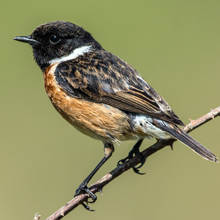 |
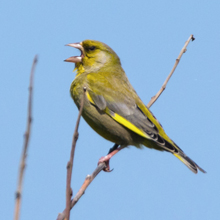 |
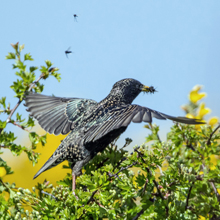 |
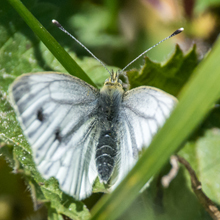 |
As
we headed back to the car a Skylark rose high over our heads cascading
its reeling sounds far and wide. We spotted a Meadow Pipit and then a
male Wheatear as they searched and probed the golf driving range for
tasty morsels. In the Pow Burn a Grey Heron had a little more than a
morsel to deal with as it had caught a large flatfish. After a few
unsuccessful attempts at downing it the Heron flew off leaving the
gulls to have a go.
| Meadow |
Pipit |
Wheatear |
Grey Heron |
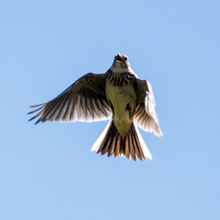 |
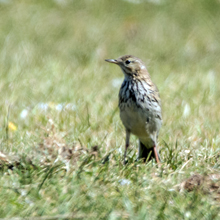 |
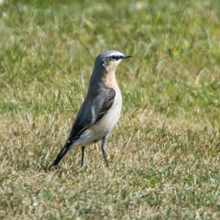 |
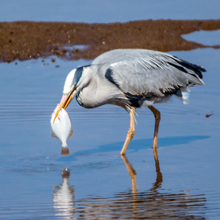 |
Back
at the car we had tea and chocolate eclairs as we sheltered from the
warm rays of the sun in the shade of a bank of tall hedges. It must be
summer right enough!
Back To Top
|

